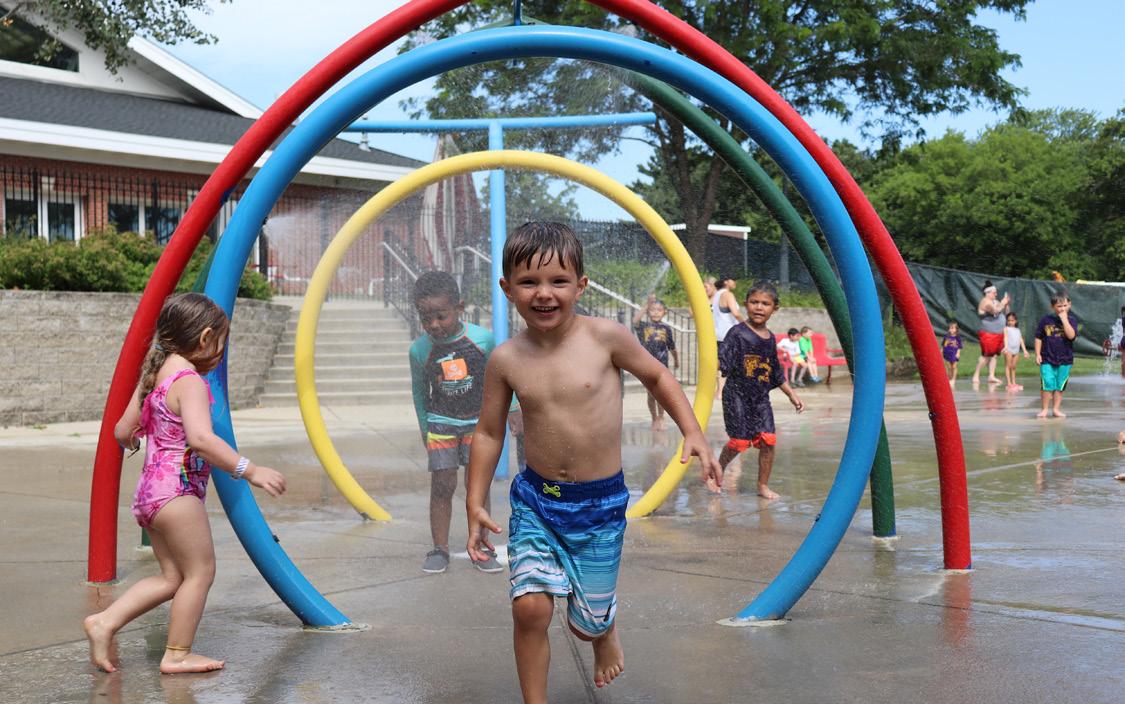
3 minute read
Agencies and Foundations Must Coordinate Efforts to Maximize Success and Limit Competition for Scarce Resources
Park and recreation and foundation leaders also emphasize that open communication, cooperation and coordination between agencies and their nonprofit partners are critical in order for such relationships to reach their full potential. In general, more successful agency-foundation relationships are characterized by more frequent contact. Communication between agencies and foundations occurs about once a month on average, and two in five park and recreation leaders note that they interact with their foundations at least once a week.
The benefits of communication are multifaceted. Interview subjects note that regular, purposeful communication between the organizations is necessary to ensure alignment of funding priorities. This includes both formal communication — focused on official business — and informal, interpersonal interactions between the leadership and support staff of both organizations.
Advertisement
“We’d have the park board meeting start at 7 p.m., so we bring everybody in at 6 p.m., feed them, and let them chat and talk about [how] ‘this is the direction that the department’s going. Where would you as foundation board members see yourselves being able to help get some funding going for specific projects....’ So, I think that’s what really is the only string that’s holding the two together right now.” [public leader]
Regular communication is also a strategy to avoid unnecessary competition between agencies and foundations for scarce resources in a community. Both agency directors and foundation leaders note financial resources (from donors) are often limited and caution agencies and foundations to avoid reaching out to the same donor network. Beyond financial resources, agencies and foundations should seek to: • Work to avoid attention fatigue or annoyance with park and recreation-related causes. Donors have limited time, patience and attention, and also may be receiving solicitations from other community causes and organizations. Agencies and foundations should coordinate their communication schedules and avoid soliciting the same donors over and over again. • Avoid competition for volunteers who may be called on repeatedly by both agencies and foundations to do the “on the ground” work for projects and initiatives. • Avoid competition for board members. Do not inadvertently ask the same individuals to serve on both foundation and park advisory boards. Agencies and foundations should coordinate and communicate about potential board members to avoid overburdening key stakeholders and to ensure greater diversity on each respective board.
In Berea (Kentucky), meals prepared by Berea College and the Berea Community School food service are distributed with a school bus to children in need.
PHOTO COURTESY OF BEREA COLLEGE “The city also had its own parks board. So it was like they had all these civic leaders who were engaged in advising on parks issues, and that board took a lot of the energy away from the parks foundation, because we needed to have a board for the parks foundation and the city had its own parks board and was doing its own fundraising. So, there just wasn’t enough food to keep the foundation strong.” [foundation leader]
Leaders at both park and recreation agencies and foundations recommend creating a formal memorandum of understanding (MOU) between the organizations. The MOU should clearly articulate the foundation’s role, how the organizations should facilitate coordination and cooperation, and define expectations and measures of success.
“And, there’s just not an appetite for master planning here. I think I could raise money for it [key long-term initiative]. But every time I bring it up, the chief of staff will say, ‘Yeah, we don’t want to do a master plan. We just want to do projects.’ And so, if there were some way that NRPA could talk compellingly about the value and benefit of master planning, that would be helpful to me for sure.” [foundation leader]




